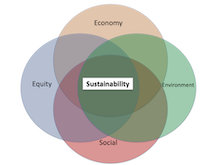
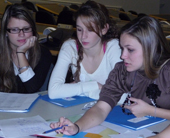 |
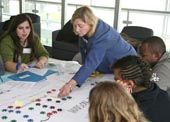 |
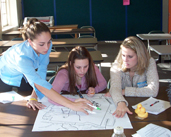 |
 |
|---|
Thinking Green
Thinking Green
Lamont-Doherty Earth Observatory
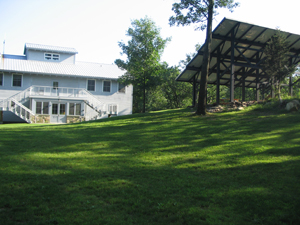 |
Did you know that some cities provide us with examples of sustainable development and ‘smart growth’? Did you know there are ways to include lower impact development pieces in a project without significantly increasing the costs? Did you know that developers are finding ways to have buildings actually generate energy rather than use it? This building at Black Rock Forest, NY uses solar & geothermal energy, composting toilets and more. |
|
Have you heard of the term L.E.E.D.? L.E.E.D. is a green building rating system administered by the U.S. Green Building Council, a Washington D.C. based nonprofit group of building industry leaders. The name stand for Leadership in Energy & Environmental Design. The L.E.E.D. program provides verification that building design and construction practices focus on energy savings, water efficiency, CO2 emissions reduction, improved indoor environmental quality and stewardship of resources and overall sensitivity to the impacts of development. There are various types and levels of L.E.E.D. certification, and there are different requirements for new construction and for redesigning an existing building, but for both the overall goal is to increase profitability of development while decreasing negative impacts on energy and resources. This is a sustainable development goal - the economic side benefits, the environmental side benefits, and the social or society benefits.
Just what is green building? The focus of green building is to preserve natural resources and habitats, reduce waste, build more livable communities. A ‘green building’ is a building designed and built so that it minimizes its impact on the environment. To achieve these goals, the builders consider the different parts of building: use of materials, like bricks and glass; systems, like the way the building uses water or energy; and maintenance or the ways the workers and tenants will take care of the building after it’s built. New York is home to the first green apartment building ever built - ‘Solaire’, a 27 story, 293 unit green building that was completed in 2003!
So what are some things to consider & what are some of the benefits for building green? (See this short video on designing a green building and then see if you can find other companies going green).
- Heating & Cooling: Both the orientation and the landscaping in and around a building affects energy use and local ecosystems. A building that has south facing windows uses the sun’s energy to keep it warm in the winter. Landscaping can also be used as a natural way to moderate temperature. Benefits: Adding trees and vegetation provide shade, decreasing the demand for air conditioning.
- Protecting the Environment - Trees, shrubs, and flowers that are native to a region provide habitat for wildlife and require less intervention, such as fertilizers and pesticides. Benefits: remove air pollutants and sequester and store carbon dioxide; reduces runoff and filters rainwater improving water quality; and provides habitat for many species. Primary costs can range from $15 to $65 per tree. Accrued benefits range from $1.50 to $3.00 for every dollar invested, with annual benefits ranging from $30 to $90 per tree planted.
- Using cost-effective energy technologies in building design can significantly reduce overall energy use, and reduce the amount of pollution and greenhouse gases generated from the use of fossil fuels. Automatic dimming fluorescent lights, high-performance windows, and energy efficient appliances are just a few effective strategies that result in energy savings. Use of renewable sources such as wind or solar can reduce reliance on fossil fuels. Benefits: Compact fluorescent lights use 66-75 percent less energy and last ten times longer than a regular bulb. If every US household replaced just one light bulb with a compact fluorescent, it would prevent enough pollution to equal removing one million cars from the road.
- Conserving resources during the building process. Selecting materials that have at least some recycled content can conserve natural resources. Minimizing construction waste can ease the impact on landfills and resources. Selecting materials made locally rather than having to bring them in from long distances also saves resources such as gasoline.
- Installing water-efficient products, such as low flush toilets, or using grey water, an conserve resources while reducing operating costs. Water systems can collect rainwater for reuse; after filtering and treatment, wastewater can be reused to flush toilets
- Using wood from forests certified by the Forest Stewardship Council. These forests are owned by companies that replant and regrow trees to protect our forests.
- Use Low-VOC paint to avoid adding harmful chemicals and paint fumes to the building.
- Thicker outside walls seal in heat and conserve energy.
- Green Roofs, pervious (absorbing) pavement, green parking lots, and grass swales are all methods to retain water on a development site and to minimize run off and stormwater impacts. Choosing a “living roof” (plant-covered) can reduce energy use, cool urban heat islands, and prevent stormwater runoff, as well as contribute to wildlife habitat and air quality.